Eszter Pécsi was born into a family of seven children on 8 March 1898. His father, Mór Pollák, was a flour merchant, and his mother, Sarolta Szántó (Schäfer), was a housewife. The family changed their surname in 1900. Despite living in relative poverty, the parents educated their children, and several of them earned degrees. Two of Eszter's sisters became doctors, another a teacher, and an older brother an architect.
.jpg)
Eszter Pécsi's degree was awarded by the Hungarian Royal Joseph Polytechnic University in 1920
In Hungary at the time, women could not study at the technical university, so Eszter, who was interested in architecture, enrolled at the Technical University of Berlin (Technische Hochschule in Berlin-Charlottenburg) and studied here between 1915 and 1919. Women were admitted to the Royal Joseph Polytechnic University only from 1918 when Eszter returned home and finished her studies in Pest. She received her engineering (now civil engineering) degree on 8 March 1920.
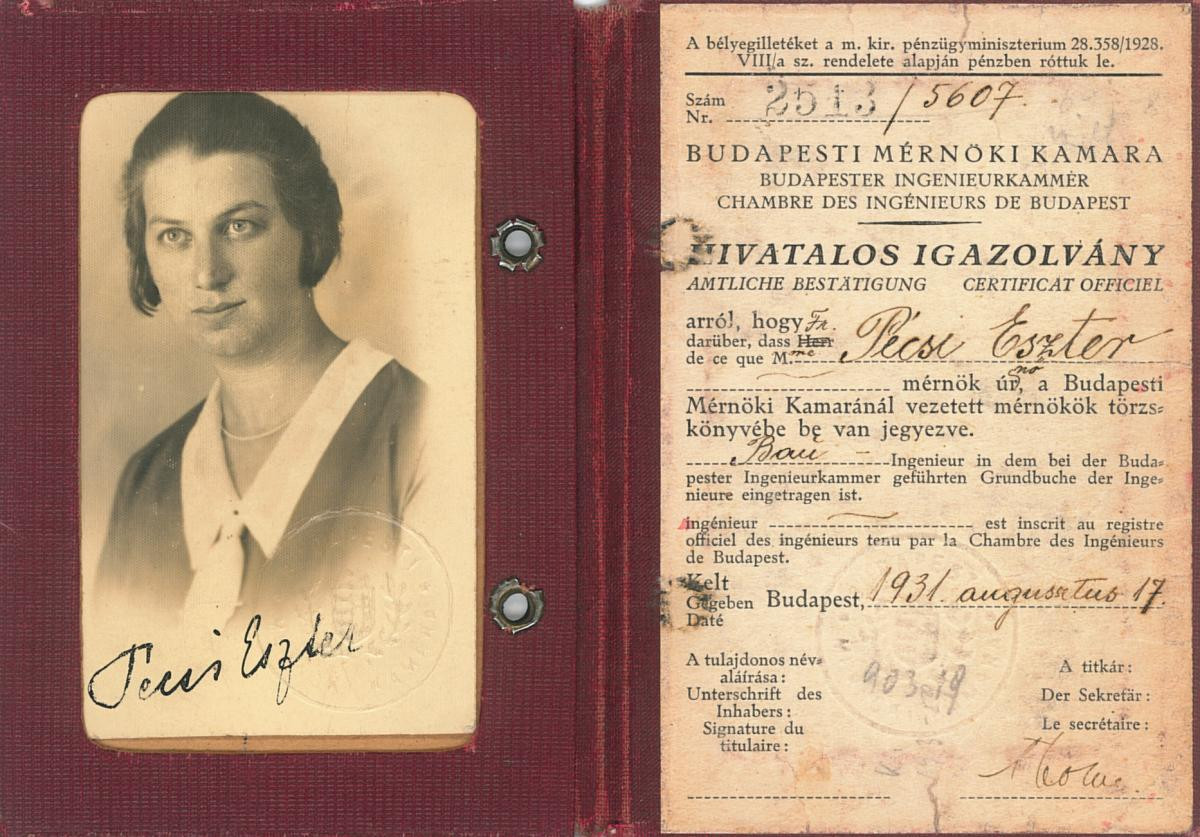
Chamber card of Eszter Pécsi (Source: bme.hu)
Unlike many of her contemporaries - who abandoned their profession after getting married - Eszter Pécsi did not disappear from the engineering field. After graduating, she was hired by the engineering office of Árpád Guth and Jenő Gergely, where she became a senior designer. Together with her husband, architect József Fischer (1901–1995), they soon became the defining figures of Hungarian modern architecture, and in 1930 they opened their own office.
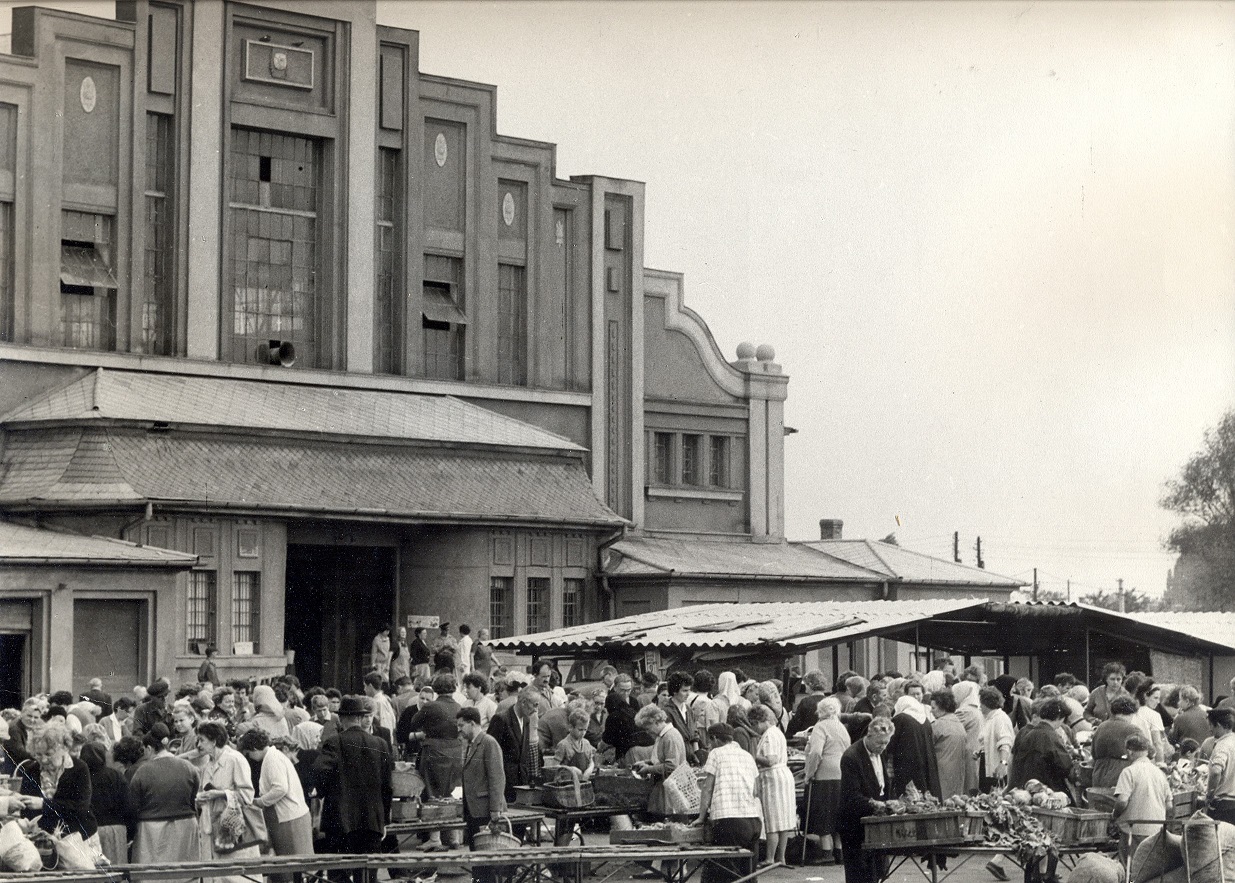
She designed the statics of the Pesterzsébet market building in 1925 (Source: Pesterzsébet Museum)
Among the works of Eszter Pécsi at this time, we can highlight the statics of the market hall in Pesterzsébet (architect József Vermes) registered in 1925, or the hinged reinforced concrete arches of the National Sports Swimming Pool dreamed up for Margit Island. At the time, this 14-metre indoor swimming pool was the first indoor swimming pool in Hungary and the largest in Europe, in which five reinforced concrete supports with a span of 31 metres ensure the covering of the pool. Alfréd Hajós described the reinforced concrete arches of the swimming pool, which were designed by Pécsi: "The large hall bridged with huge reinforced concrete arches has an extremely imposing and impressive effect on the viewer, these arches span the wide space without any intermediate support".
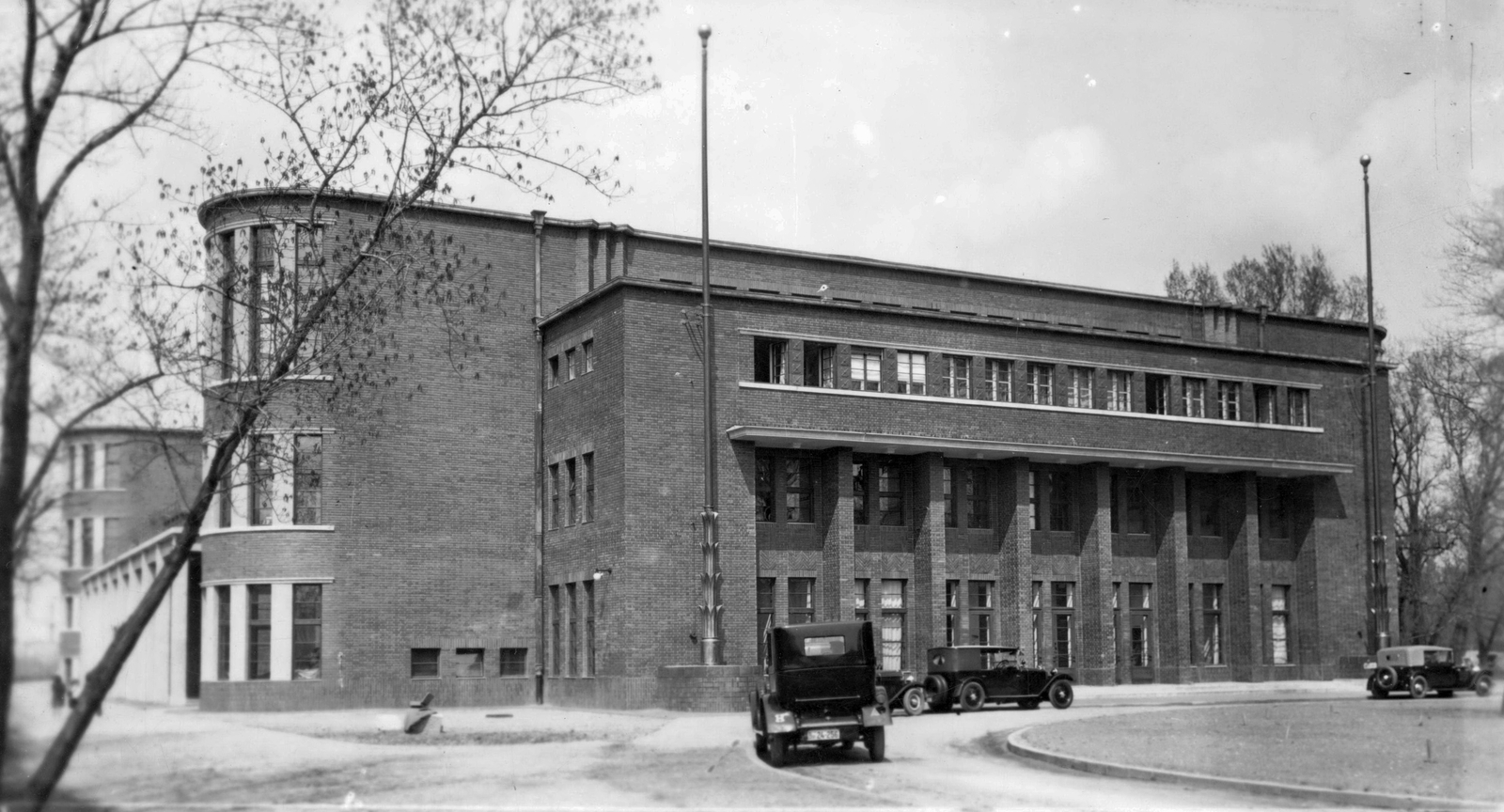
The statics of the Alfréd Hajós Sports Swimming Pool were also designed by Eszter Pécsi (Source: Fortepan/No.: 58265)
Eszter Pécsi was also active in women's issues. In 1928, she founded the first Hungarian women's club, the Working Women's Club (DNC). In 1928, Friss Újság asked women working in "men's fields". Pécsi said the following: "My dream is not only a child [...] I want to create bridges, railways, national roads!"
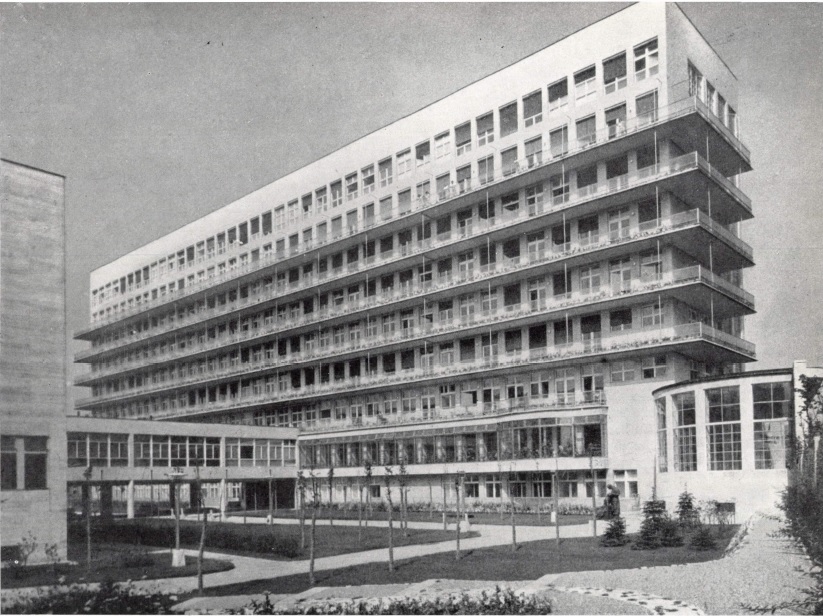
The building of National Health Insurance Fund's Fiumei Road casualty hospital, which was called the Magdolna Casualty Hospital when it was handed over (Source: bme.hu)
Eszter Pécsi's original structural solutions can be seen in the structural plans of the Fiumei Road casualty hospital built between 1937-40 as the capital's first steel structure high-rise (the Magdolna Casualty Hospital when it was handed over), the Kútvölgyi Road hospital, and several modern villas.
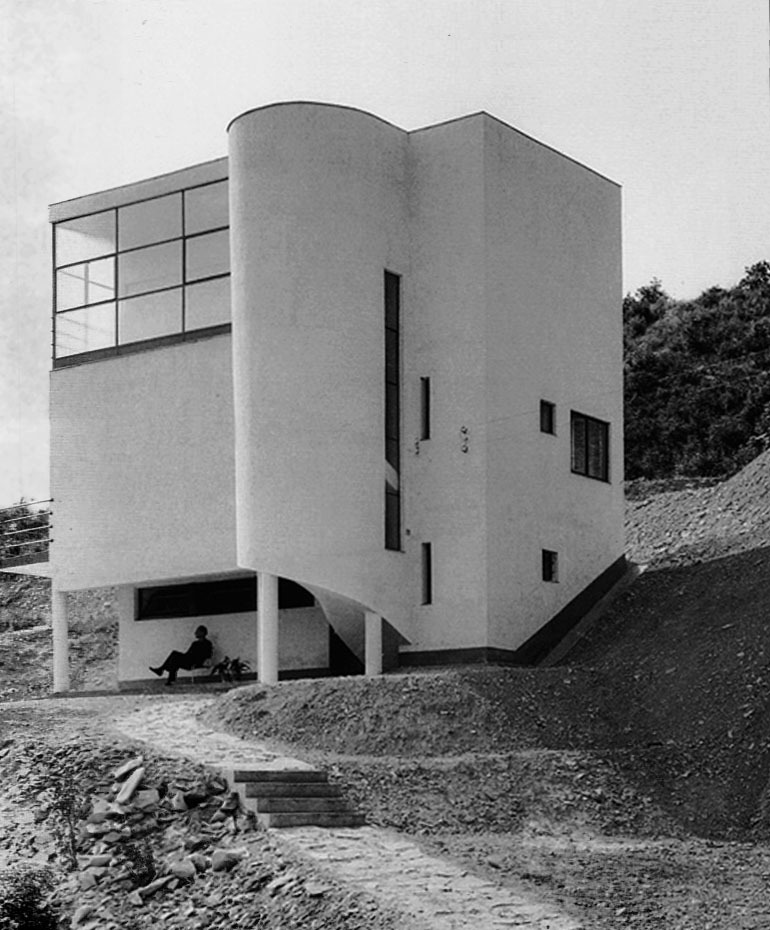
The plans for the Hoffmann Villa on Szépvölgyi Road were drawn up by József Fischer and Eszter Pécsi in 1935 (Source: Tér és Forma, Issue 1 of 1935)
She was regularly the static designer in her husband's works. This was also the case with the 1935 Hoffmann Villa in Szépvölgyi Road, the Bajza Street villa built for the opera singer Rózsi Walter (1936), the Járitz Villa in the 2nd District Baba Street, or the Rassay Villa in Rózsadomb (1941).
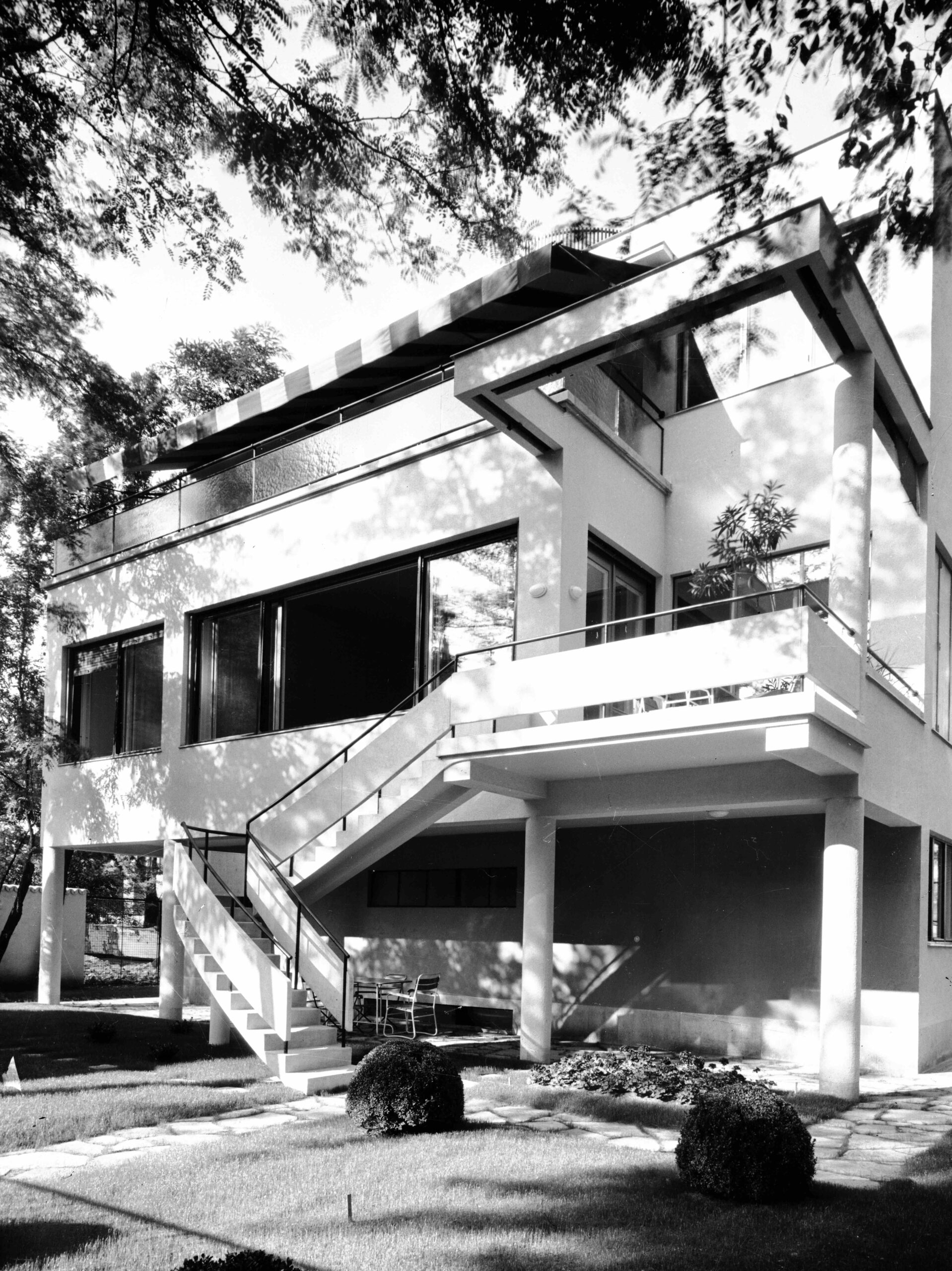
Rózsi Walter's villa in Bajza Street, today it is the building of the Hungarian Academy of Arts (Source: walterrozsivilla.hu)
After Eszter Pécsi participated in the work of the Hungarian group of the CIAM (Congres Internationalaux d'Architecture Moderne), she also became the static designer of the villas and apartment buildings designed by the members. Among the architects of the time, she worked with, among others, Farkas Molnár, Pál Ligeti, the Nay and Strausz architectural firm, Lajos Falus, Tibor Hübner and István Janáky Sr., Emil Bauer, Nándor Körmendy, Máté Major and Zoltán Kósa.

Rassay Villa, designed by József Fischer (Source: Tér és Forma, Issue 7 of 1942)
Readers get a pleasant picture of the engineer's life in the interpretation of Tér és Forma: "Eszter Pécsi, the only Hungarian female static engineer, lives in the villa district of Óbuda with her husband, architect József Fischer, and their sons. From their small villa built in Bauhaus style, she drives into Budapest in the morning in her sports car, of course, she drives the car herself. She drives from one building to another, negotiates, observes, checks, argues. The workers are no longer surprised that instead of a man with a moustache and glasses, a young lady with a sympathetic face is the "engineer Pécsi".
Even after World War II, she received many commissions, as she participated in the review of damaged buildings, but she also carried out the strengthening of the roof of the National Theatre. From 1949, she worked for the Design Office of the Ministry of Smelting and Machinery (KGMTI), where she later became a chief static engineer. It was then that she designed the statics of MÁVAG's forge workshop.
Eszter Pécsi was fired from the company in 1957. Presumably because of her participation in the company revolutionary committee and her husband's role in the reformed Social Democratic Party in 1956. After that, she left Hungary. First, she travelled to Vienna for a year, where she was employed by the Krapfenbauer architectural firm. She designed the statics of the first inner-city multi-storey parking garage next to the Vienna Opera House. In 1958, she travelled to New York to visit her son who lived there.
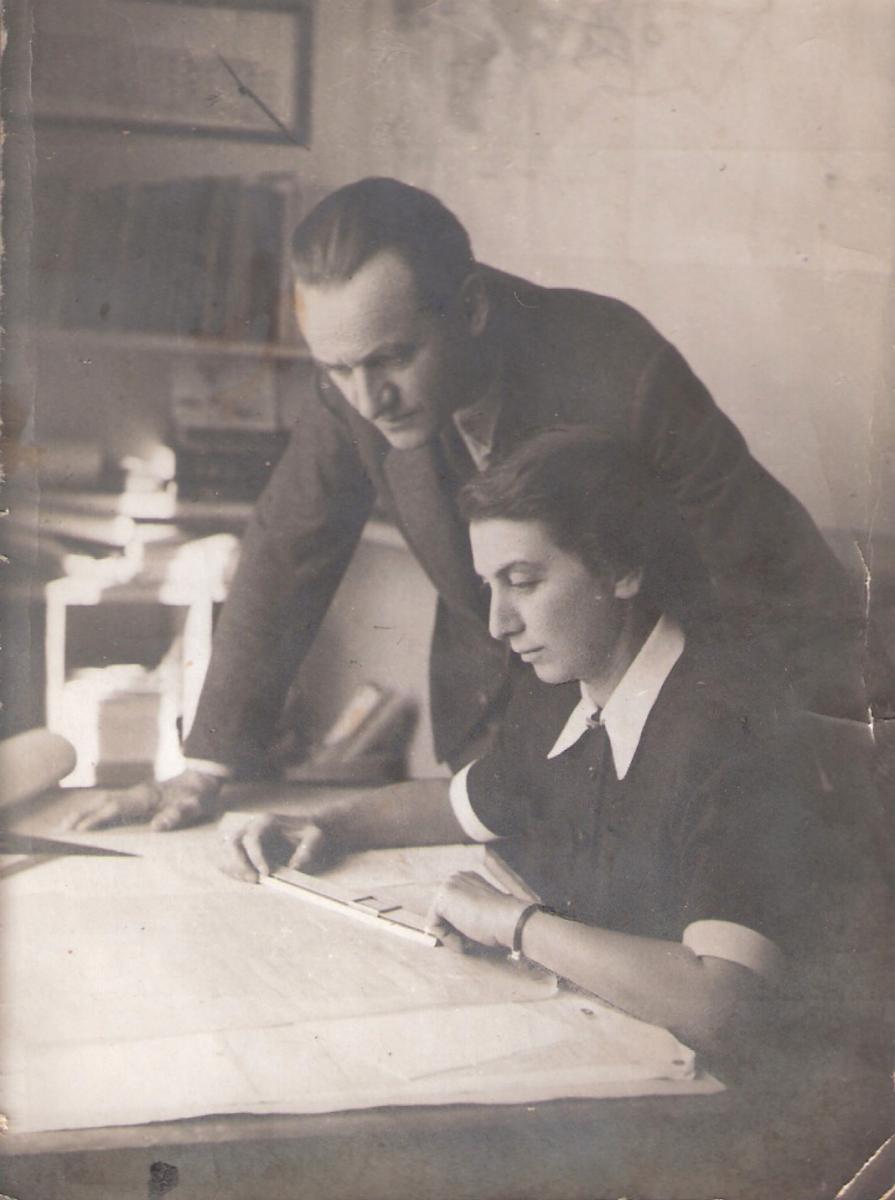
With her husband, József Fischer (Source: bme.hu)
Passionate about her career, Pécsi became a well-known specialist in the USA at the age of almost 60: she got a job at an engineering firm and then worked with Marcell Breuer, the world-famous Hungarian architect and designer. Later, one of the most prestigious American architectural firms, SOM (Skidmore, Owings and Merrill), offered her a job. She also made the static plans for the two high-rise buildings of Columbia University and the Hotel Americana. Her career was on the rise, and nothing shows it better than the fact that she received the Best Static Engineer of the Year award in 1965.
József Fischer followed his wife to the United States in 1964, he took care of Eszter Pécsi after her severe stroke. The first Hungarian female engineer died in New York on 4 May 1975, her ashes were brought home and laid to rest in the Farkasréti cemetery. At the Budapest University of Technology and Economics, on the 100th anniversary of the first engineering degree awarded to women, in March 2020, a room was named after her.
Cover photo: Eszter Pécsi at work (Source: bme.hu)

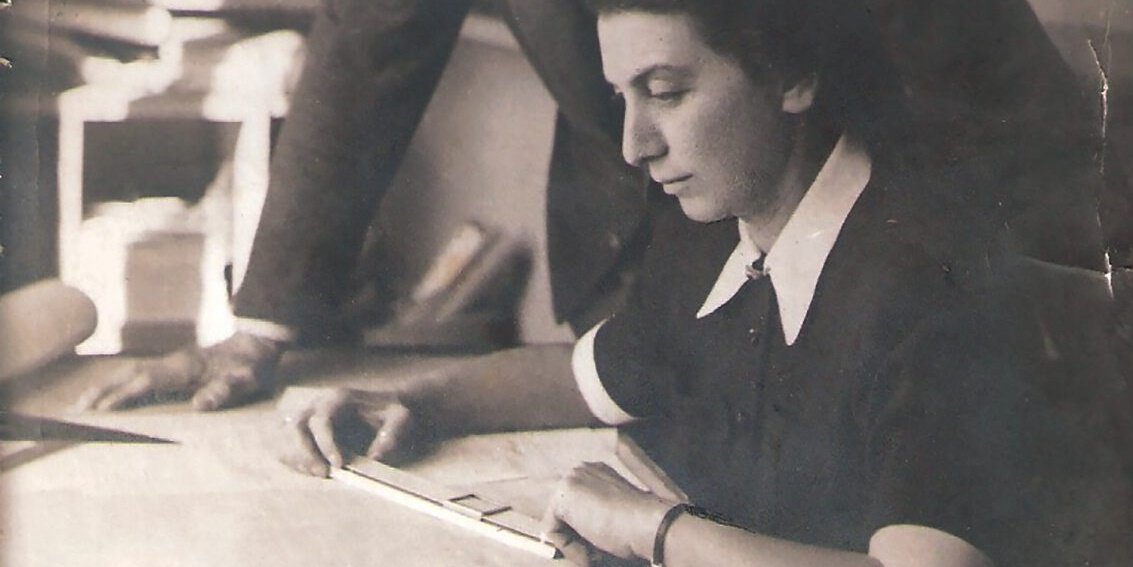

































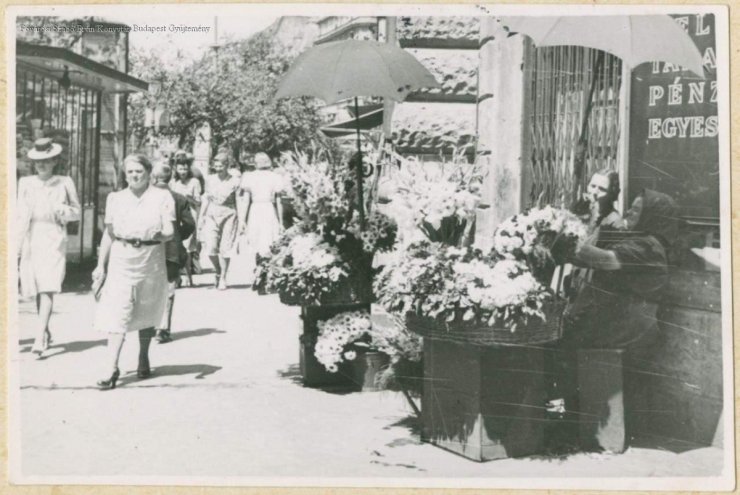
Hozzászólások
Log in or register to comment!
Login Registration